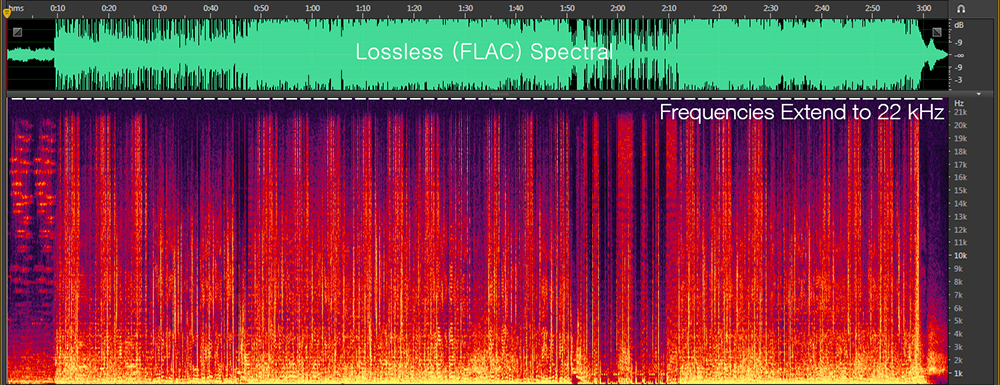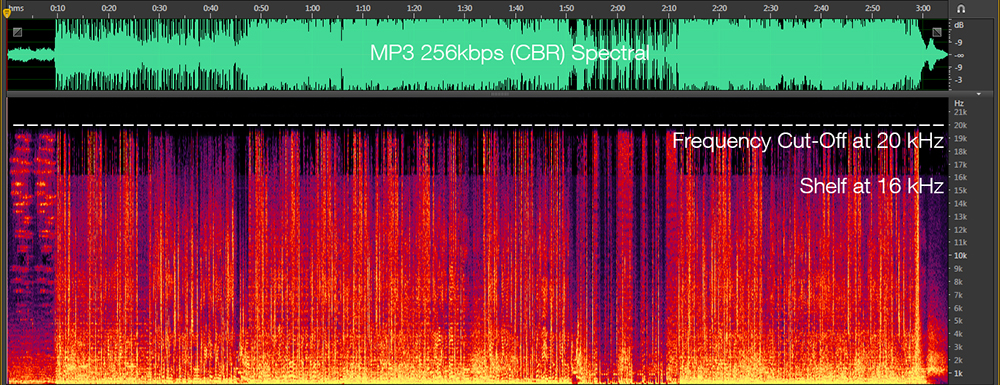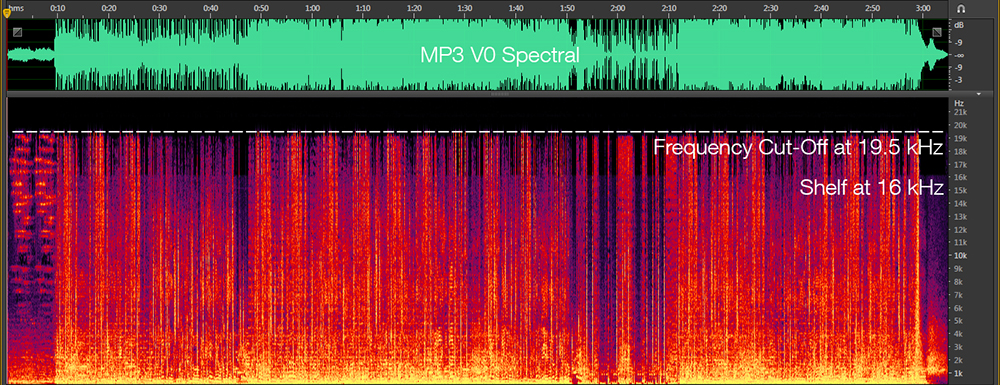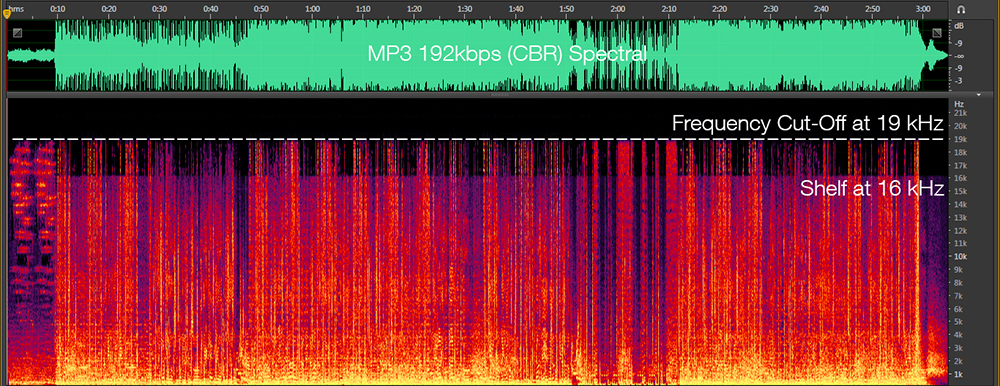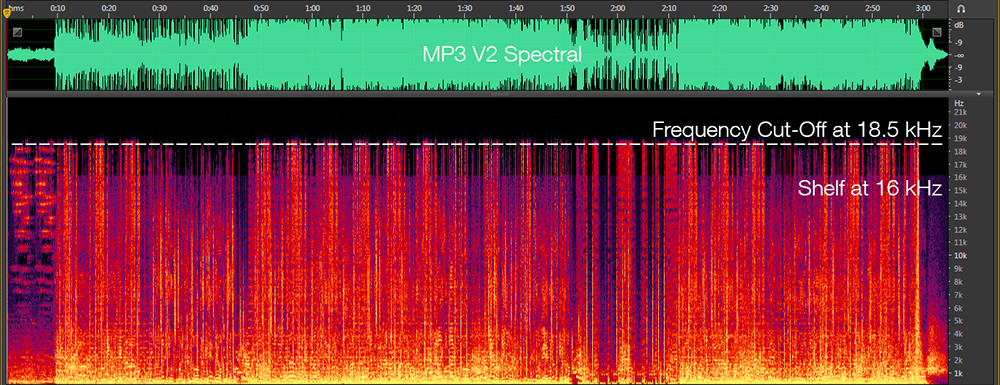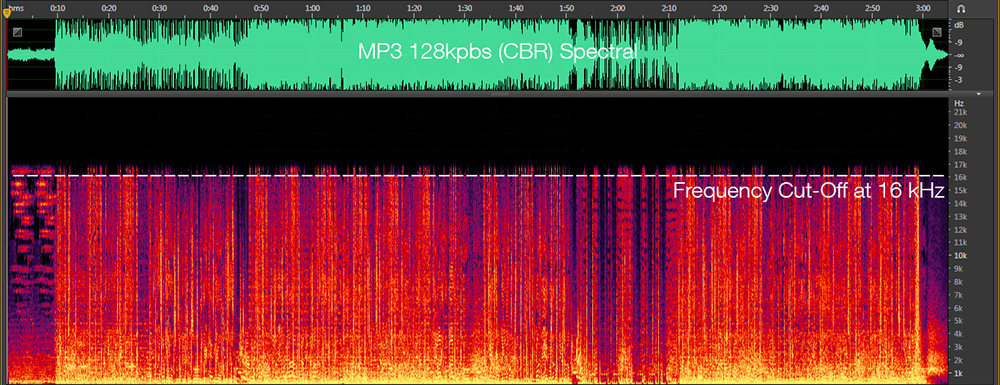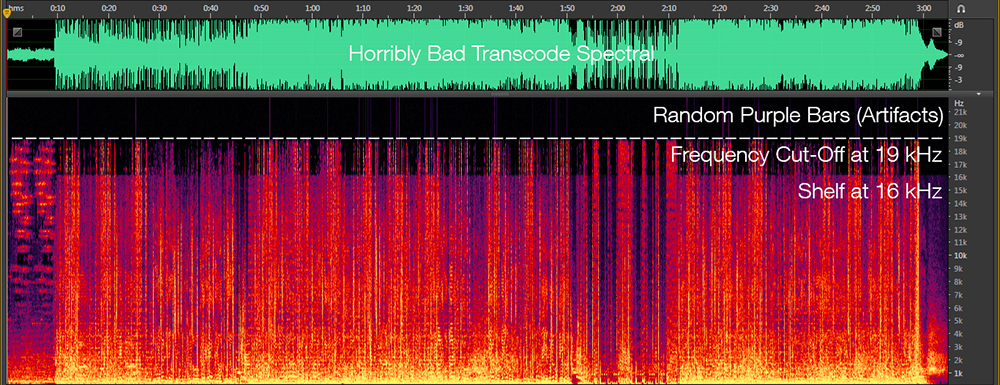Spectral Analysis
Spectral analysis is a visual way to display the data in a music file. Every music note has a specific frequency: lower notes have lower frequencies and higher notes have higher frequencies. All of the frequencies are displayed on a spectral diagram (“spectral” for short), which is a graph of all the frequencies vs. time in a music file. Frequencies are measured in hertz (Hz) and kilohertz (1,000 Hz). Humans have a hearing range from about 20 Hz — 20kHz (20,000 Hz).
Since spectrals show all the data in a file, they are helpful tools to use when you’re trying to decide whether or not a song has been transcoded. Every file has a relatively standard frequency cut-off.
Click on any of the spectrals below to view it in a higher resolution.
CD / Lossless
Songs on a retail CD and lossless songs have frequencies that extend all the way to 22 kHz. Since lossless to lossless transcoding preserves all of the data in a music file, the spectral of a lossless song will look the same in FLAC, WAV (PCM), ALAC, etc.
However, different genres have different-looking spectrals. The example above was a pop song, so most of the frequencies were represented. But look at this classical piano song.
It looks much different, right? But it’s still a lossless spectral! Notice how “white noise” (the light purple) still extends to 22 kHz, even though those frequencies aren’t used.
MP3
Different types of MP3s have different frequency cut-offs. MP3s also tend to have a “shelf” at 16 kHz (you’ll see it in the spectrals).
MP3 320kbps (CBR) has a frequency cut-off at 20.5 kHz.
MP3 256kbps (CBR) has a frequency cut-off at 20 kHz.
MP3 V0 has a frequency cut-off at 19.5 kHz.
MP3 192kbps (CBR) has a frequency cut-off at 19 kHz.
MP3 V2 has a frequency cut-off at 18.5 kHz.
MP3 128kbps (CBR) has a frequency cut-off at 16 kHz.
Transcodes
How are spectrals helpful when trying to detect transcodes? Say you download a song in FLAC from a blog. The only way to verify that this song is truly a lossless file and not a transcoded file is by looking at its spectral. (Programs like AudioIdentifier are not reliable at detecting transcodes.)
For example, the spectral below is of a FLAC file: the file extension is .flac, it is 21.8 MB, and it sounds okay.
But whoa, does that look anything like what a regular FLAC spectral should look like? No! This file was transcoded from MP3 192kbps (CBR) to FLAC. It’s a lossy to lossless transcode, which is bad.
Programs
For spectral analysis, we recommend using either Adobe Audition (Windows or Mac OS), Audacity (Windows, Mac OS, Linux), and SoX (Windows, Mac OS, Linux — command line only). All of the spectrals that appear in this guide were viewed in Adobe Audition CS 6.
Although you should use spectral analysis to determine whether a file is a transcode or not, you will need to use another program to first determine what bitrate or encoding preset the file claims to be. For this purpose, we recommend using Audio Identifier or dbPowerAmp on Windows and dnuos or MediaInfo on Mac OS.
